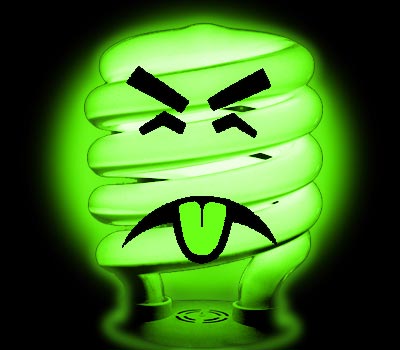
There are three scenarios under which some compact fluorescent lights (CFLs) may affect emotions. CFL bulbs contain mercury. If a bulb breaks and the mercury inside the bulb enters the body, mercury poisoning can affect the emotions. Electromagnetic fields (EMFs) emitted by some CFLs may affect emotions. Panic disorder patients report that CFL lighting is a trigger for panic attacks.
-
What Emotions are Affected by CFLs?
-
The National Institutes of Health (NIH) and the World Health Organization (WHO) report that the only scientifically valid link between EMF exposure and health is the link between EMFs and childhood leukemia. In spite of this, many people and some scientists, including Dr. Magda Havas of Trent University in Ontario, Canada, believe that EMFs can cause anxiety, depression, hyperactivity, irritability and a host of physical illnesses.
Guidelines for Limiting Exposure to EMFs
-
The International Commission on Non-Ionizing Radiation Protection (ICNIRP)-a non-governmental organization in official relations with WHO-have set voluntary guidelines for limiting exposure to high levels of EMFs because of the leukemia connection.
WHO and ICNIRP say that although some studies have shown a link between EMF and emotions or other physical symptoms, researchers have been unable to replicate those findings in other studies, therefore, there is no proof of a link. As a result, they have not set limits on exposure to chronic low-level EMFs from sources such as fluorescent lighting.
WHO recommends continued study, limiting daily exposure if possible, and following the voluntary guidelines.
How do CFLs Cause Depression and Anxiety?
-
According to The Canadian Initiative to Stop Wireless, Electronic and Electromagnetic Pollution document “Talking to Your Doctor,” EMF exposure may cause adrenal glands to excrete too much cortisol and adrenaline, which can lead to irritability and hyperactivity. The document states that EMF can cause a decrease in the brain hormones serotonin, norepinephrine and dopamine, all of which are linked to depression and anxiety.
Fluorescent Lighting and Panic Attacks in People With Panic Disorder
-
People with panic disorder have often reported panic attacks triggered by entering stores with fluorescent lighting. Panic attacks that occur under this scenario may be the result of a visual trigger, rather than the result of EMFs.
Two of the symptoms of panic attacks are derealization and depersonalization, or feelings of unreality. Depersonalization and derealization are caused by shallow breathing that results in chemical changes in the body. When this occurs, people report that things around them look a bit different.
The look of things in a department store under fluorescent lighting can resemble the way things look when a person is experiencing depersonalization or derealization. This visual cue can trigger a panic attack by causing the body to react as if it is in danger.
CFLs and Mercury Poisoning
-
CFLs contain mercury, but under normal use, people are not exposed to the mercury inside a bulb. If a bulb breaks, mercury can be inhaled or enter the body through skin contact. Mercury poisoning can cause mood swings, irritability and nervousness.
Compact Fluorescent Lights and Sources of Electromagnetic Fields
-
CFLs are just one source of EMFs. Other sources include computers, wireless antenna, transformers, cordless home phones, cellular phones, cellular phone towers, appliances, power lines and electrical substations. Because there are so many sources of EMFs and people’s exposure can vary day to day and minute to minute, it is difficult to scientifically determine cause and effect between EMF exposure and symptoms.
LED lights are an energy-efficient alternative to CFLs and don’t produce EMFs.
-




